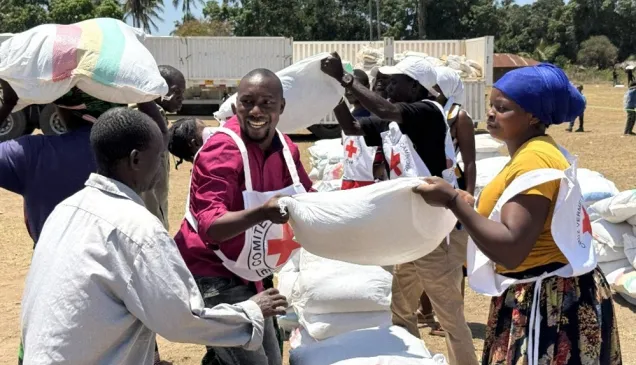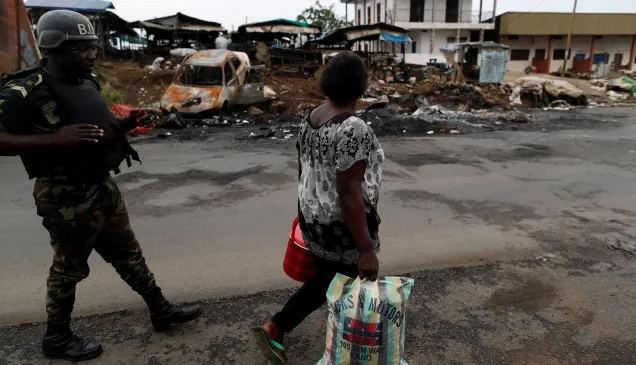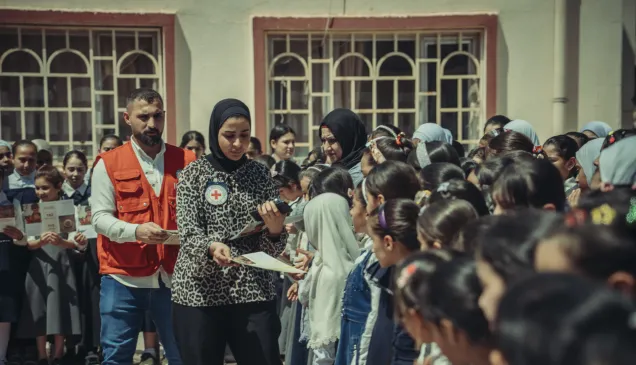Landmines: A legacy of war
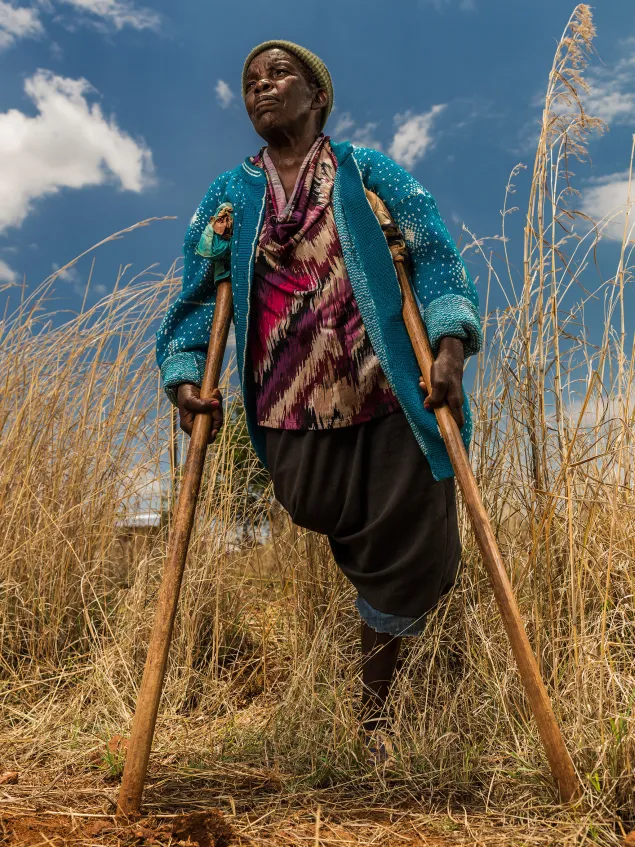
Liquina Gimo Kariche, 65, lost her right leg above the knee to an anti-personnel landmine in 1987, three years after her husband was killed by an anti-personnel landmine. Destitute, she lost nine of her eleven children to illness and disease.
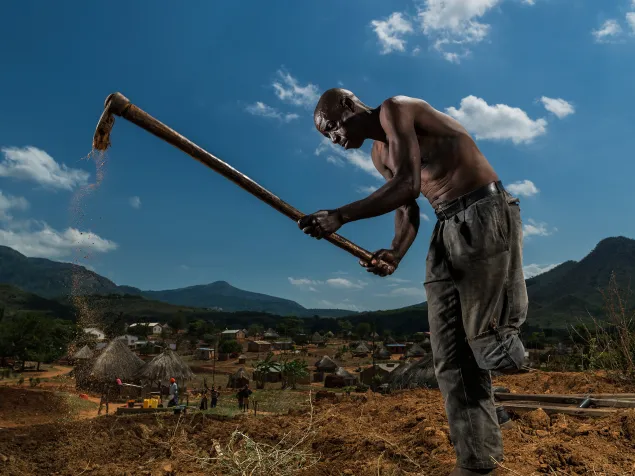
Barrio Chiuijo, Mozambique
Bonafacio Muazia, 57, lost his left leg to an anti-personnel landmine in 1985 during the civil war. However, he continues to farm, having developed extraordinary balance. With his wife carrying the hoe, every day he hobbles 45 minutes each way to his garden.
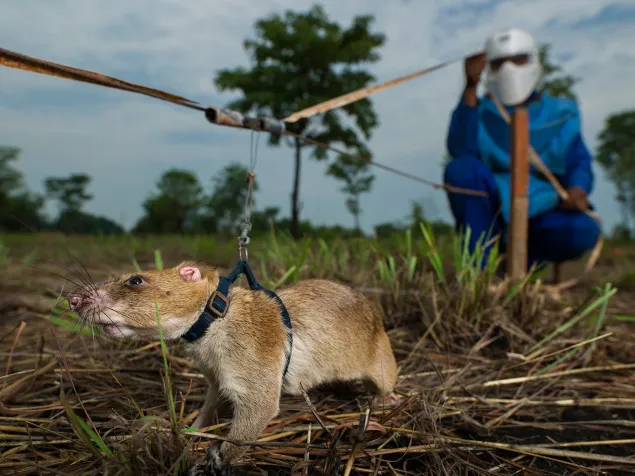
Gondola District, Mozambique
African pouch rats, with their acute sense of smell, are trained by Anti-Personnel Landmines Detection Product Development (APOPO) to sniff out landmines, which are subsequently detonated on the spot by deminers. Using rats significantly speeds up the process of clearing landmines.
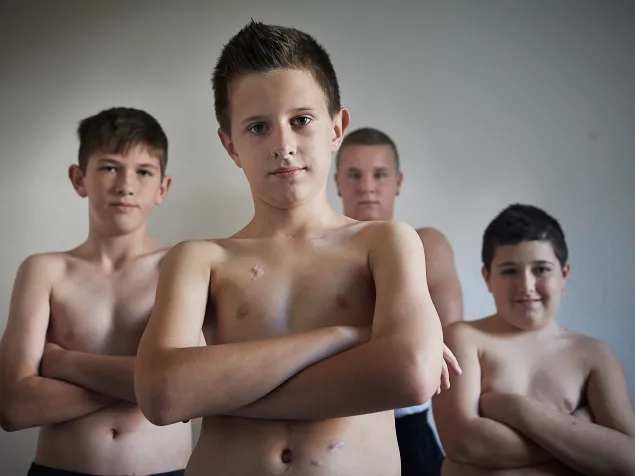
Zunovnica, Bosnia and Herzegovina
Mirza Smajlovic, 12, Denis Merdzanovic, 12, Alen Konakovic, 14, and Jasmin Sidran, 12, (left to right) were playing with their friend Mirza Merdzanovic, 10 (cousin of Denis) one day in November 2013, when they found a bag of weapons in a stream. Mirza put a rifle grenade together and hit it against a wall. The explosion killed him and injured these four boys. Explosive remnants of war are common in post-conflict States such as Bosnia/Herzegovina.

Zunovnica, Bosnia and Herzegovina
Sabiha Hadzajlic, 45, and her daughter Merima, 10, grieve beside the grave of Merima’s brother, Eldar. Merima and Eldar were playing beside a stream one day in November 2013 when he came across a hand grenade. It exploded when Eldar picked it up, killing him and injuring her. The village of Zunovnica is close to an old military barracks and accidents are common.
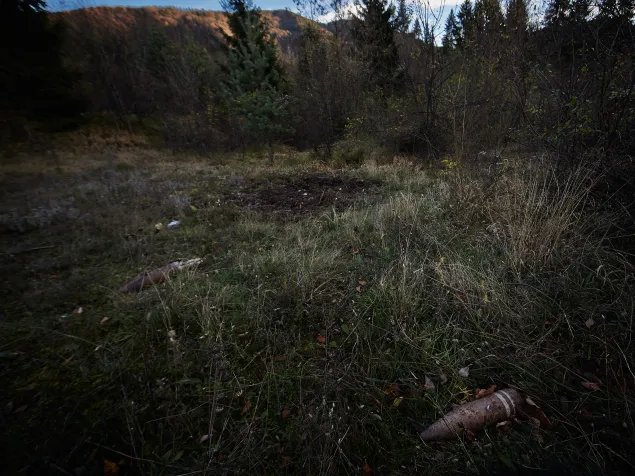
Zunovnica, Bosnia and Herzegovina
These are two common examples of explosive remnants of war: a 125mm high-explosive fragmentation tank round and the 122mm high-explosive artillery shell lying beside it. The copper bands on the artillery shell have been scavenged by scrap-metal collectors.
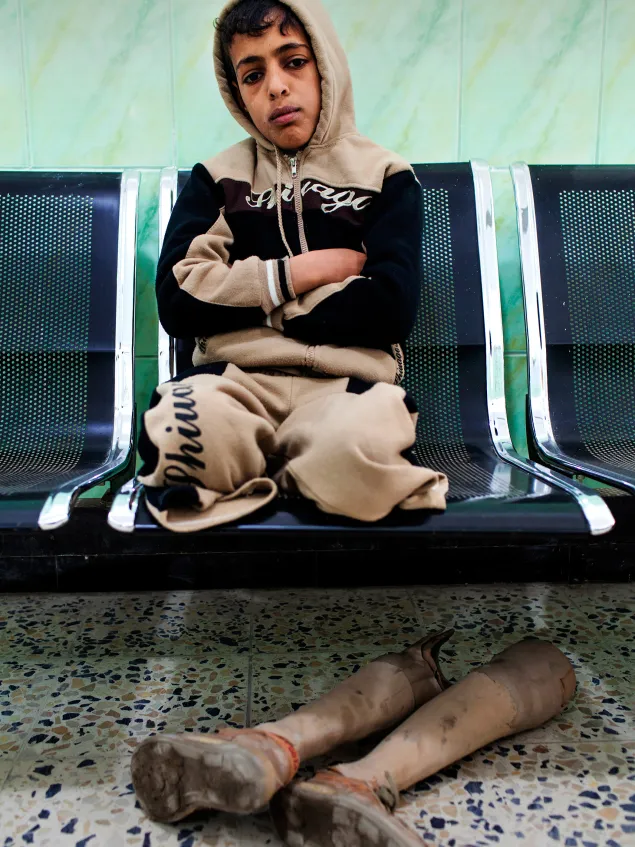
Najaf, Iraq
In January 2006, when Sajad Faleh was four years old, he and three of his brothers came across an unexploded cluster munition and began playing with it. It exploded, killing Sajad’s two older brothers and lacerating his younger brother’s stomach; Sajad lost both his legs. He is seen waiting for an examination at an ICRC physical rehabilitation centre.
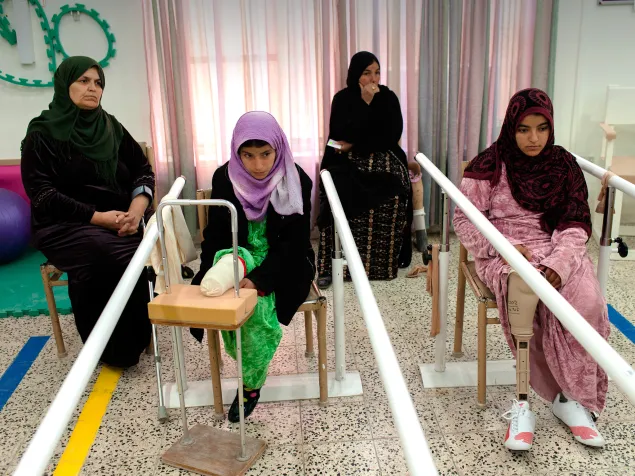
Erbil, Iraq
Maserieh Sahar, 13, (left) and her sister Saeda, 16, both lost their left legs to anti-personnel landmines. With the help of their mother (sitting behind them), they are learning to walk on their new prosthetic legs at the ICRC’s physical rehabilitation centre in Erbil.
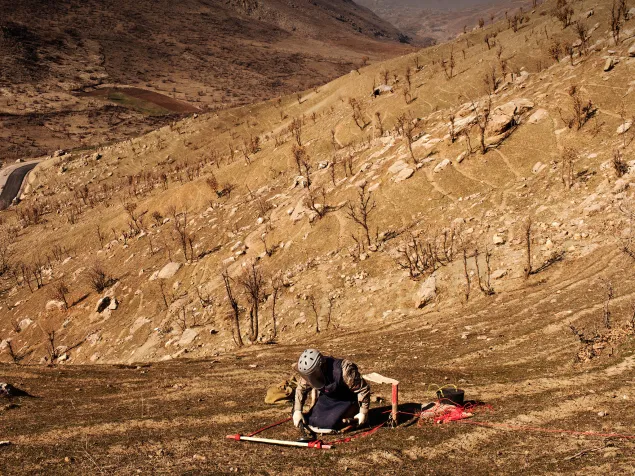
Mawilian, Iraq
An Iraqi deminer from the Iraqi Kurdistan Mine Action Centre in the Zimali Shekhi minefield, which has an area of 68,000 square metres. The mines in it were laid in 1984.
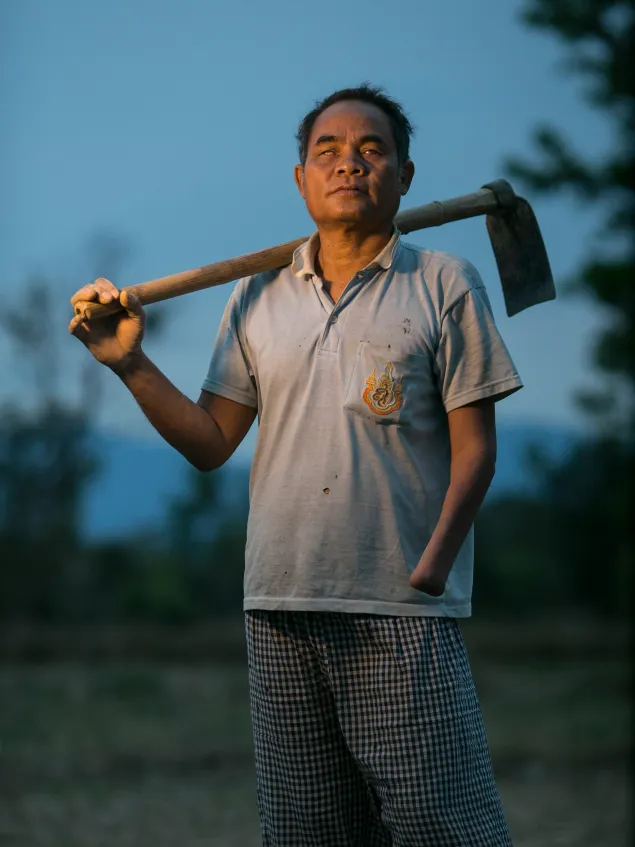
Nakhoysao, Salavan District, Laos
Ounlar, 61, lost his sight and his left hand in 1981 when he picked up an item of unexploded ordnance while farming.
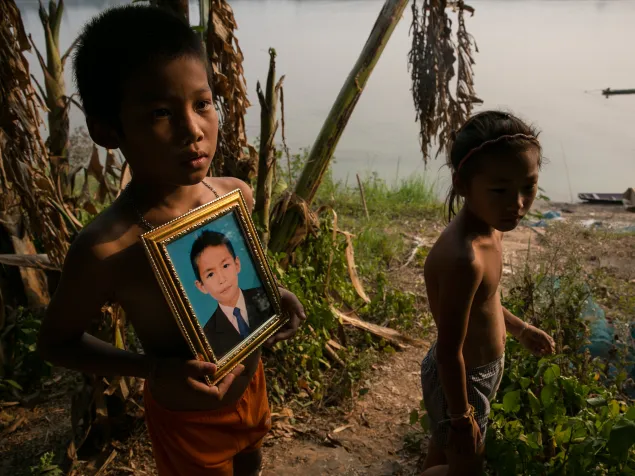
Hangsing, Pakxan District, Laos
Mek, 9, holds the portrait of Somak Toe, 12, who was one of three boys killed by an item of unexploded ordnance they were carrying home by bicycle. Between 1963 and1972, during the Vietnam War, over 270 million cluster sub- munitions were dropped on Laos.
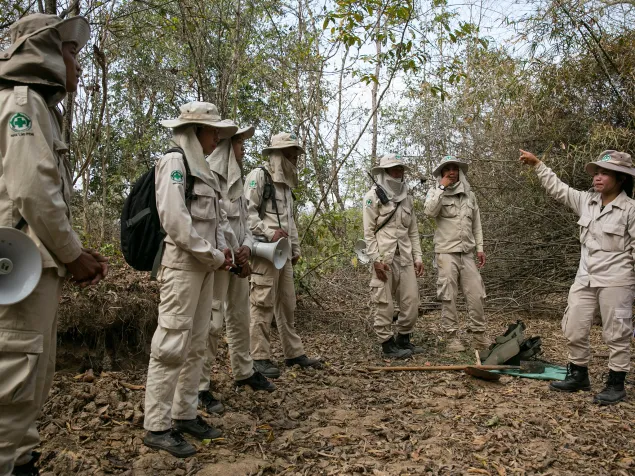
Hatkhongluang, Salavan District, Laos
The leader of a Norwegian People's Aid team gives workers their instructions before beginning clearance operations. The Convention on Cluster Munitions was adopted in 2008 and over half the world’s nations have signed it, including Laos.
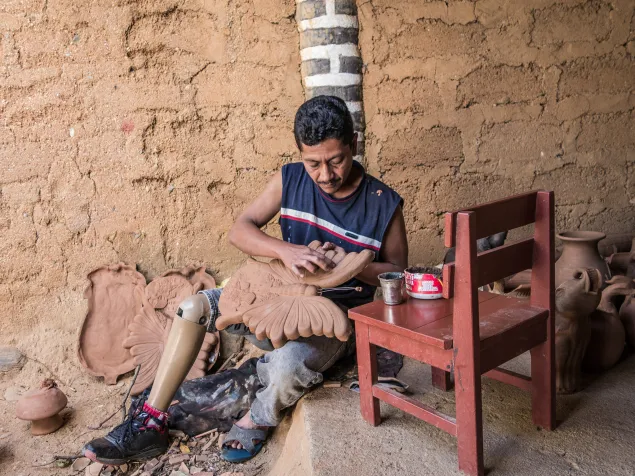
Mozonte, Nicaragua
Emilio José Gómez Floriano, 42, was tending cows when he stepped on an anti-personnel mine in 1991 and lost his right leg. He now works as a ceramist in the family business.
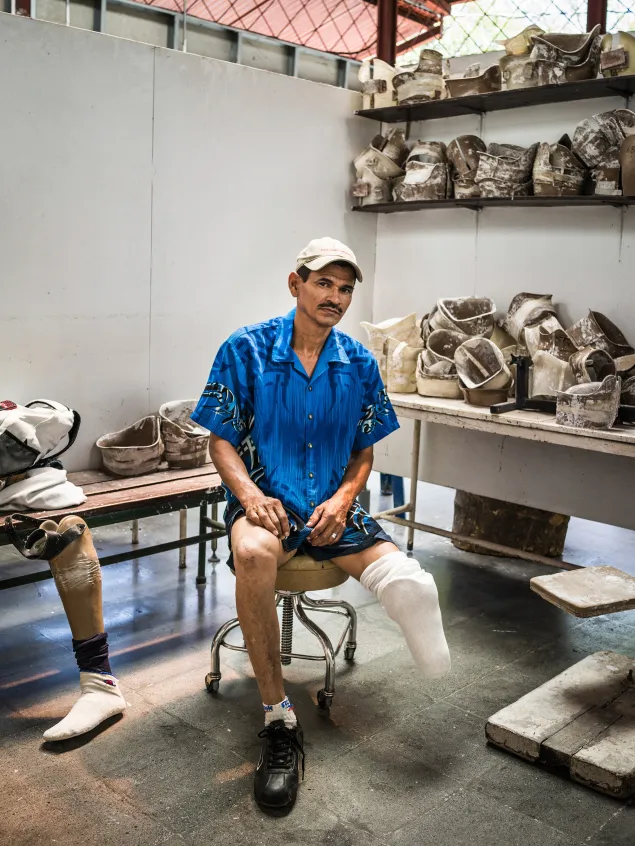
Managua, Nicaragua
Benito Ribas Villalobos, 49, was working his land when he stepped on an anti-personnel mine in 1989 and lost his left leg. He lives with his wife and five children in Somotillo, and continues to farm his land. As he has had the same prosthesis for five years, he has come to the Aldo Chavarria Rehabilitation Hospital in Managua to be fitted for a new one.
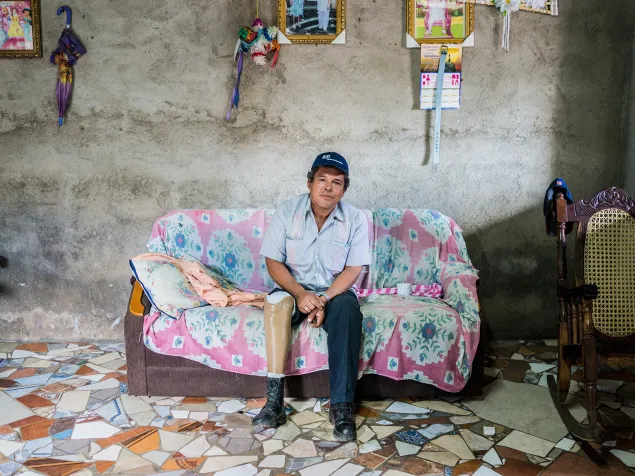
Managua, Nicaragua
Carlos José Picado, 52, lost his right leg to an anti-personnel mine during the Nicaraguan conflict of 1981-1990 in which he took part. He lives with his wife and daughter on the outskirts of Managua and works as a security guard in a hospital in that city.
The ICRC sent five photographers to five countries – Bosnia and Herzegovina, Iraq, Laos, Mozambique and Nicaragua – to document the human toll exacted by mines and other explosive remnants of war. The images capture both the dedicated work of those involved in clearance operations, and the anguish and resilience of survivors.

